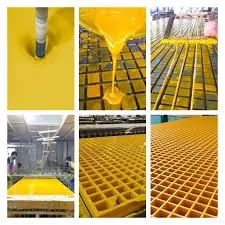
-
 Afrikaans
Afrikaans -
 Albanian
Albanian -
 Amharic
Amharic -
 Arabic
Arabic -
 Armenian
Armenian -
 Azerbaijani
Azerbaijani -
 Basque
Basque -
 Belarusian
Belarusian -
 Bengali
Bengali -
 Bosnian
Bosnian -
 Bulgarian
Bulgarian -
 Catalan
Catalan -
 Cebuano
Cebuano -
 China
China -
 China (Taiwan)
China (Taiwan) -
 Corsican
Corsican -
 Croatian
Croatian -
 Czech
Czech -
 Danish
Danish -
 Dutch
Dutch -
 English
English -
 Esperanto
Esperanto -
 Estonian
Estonian -
 Finnish
Finnish -
 French
French -
 Frisian
Frisian -
 Galician
Galician -
 Georgian
Georgian -
 German
German -
 Greek
Greek -
 Gujarati
Gujarati -
 Haitian Creole
Haitian Creole -
 hausa
hausa -
 hawaiian
hawaiian -
 Hebrew
Hebrew -
 Hindi
Hindi -
 Miao
Miao -
 Hungarian
Hungarian -
 Icelandic
Icelandic -
 igbo
igbo -
 Indonesian
Indonesian -
 irish
irish -
 Italian
Italian -
 Japanese
Japanese -
 Javanese
Javanese -
 Kannada
Kannada -
 kazakh
kazakh -
 Khmer
Khmer -
 Rwandese
Rwandese -
 Korean
Korean -
 Kurdish
Kurdish -
 Kyrgyz
Kyrgyz -
 Lao
Lao -
 Latin
Latin -
 Latvian
Latvian -
 Lithuanian
Lithuanian -
 Luxembourgish
Luxembourgish -
 Macedonian
Macedonian -
 Malgashi
Malgashi -
 Malay
Malay -
 Malayalam
Malayalam -
 Maltese
Maltese -
 Maori
Maori -
 Marathi
Marathi -
 Mongolian
Mongolian -
 Myanmar
Myanmar -
 Nepali
Nepali -
 Norwegian
Norwegian -
 Norwegian
Norwegian -
 Occitan
Occitan -
 Pashto
Pashto -
 Persian
Persian -
 Polish
Polish -
 Portuguese
Portuguese -
 Punjabi
Punjabi -
 Romanian
Romanian -
 Russian
Russian -
 Samoan
Samoan -
 Scottish Gaelic
Scottish Gaelic -
 Serbian
Serbian -
 Sesotho
Sesotho -
 Shona
Shona -
 Sindhi
Sindhi -
 Sinhala
Sinhala -
 Slovak
Slovak -
 Slovenian
Slovenian -
 Somali
Somali -
 Spanish
Spanish -
 Sundanese
Sundanese -
 Swahili
Swahili -
 Swedish
Swedish -
 Tagalog
Tagalog -
 Tajik
Tajik -
 Tamil
Tamil -
 Tatar
Tatar -
 Telugu
Telugu -
 Thai
Thai -
 Turkish
Turkish -
 Turkmen
Turkmen -
 Ukrainian
Ukrainian -
 Urdu
Urdu -
 Uighur
Uighur -
 Uzbek
Uzbek -
 Vietnamese
Vietnamese -
 Welsh
Welsh -
 Bantu
Bantu -
 Yiddish
Yiddish -
 Yoruba
Yoruba -
 Zulu
Zulu
Durable Solutions for Water Storage Exploring Fiberglass Tank Benefits and Applications
Fiberglass tanks have become increasingly popular in various industries due to their numerous advantages over traditional storage solutions. These tanks, made from reinforced plastic materials, are widely used for storing water, chemicals, and other liquids. Their application can be traced back to industries such as agriculture, wastewater treatment, and chemical processing, where the need for durable and reliable storage solutions is paramount.
One of the most significant advantages of fiberglass tanks is their corrosion resistance. Unlike metal tanks, which can rust and degrade over time, fiberglass tanks do not succumb to the same kind of wear and tear. This makes them an ideal choice for storing corrosive substances, such as acids and bases, that would otherwise damage conventional storage solutions. The non-reactive nature of fiberglass means that the stored materials remain uncontaminated, ensuring that the integrity of the liquids is maintained.
Moreover, fiberglass tanks are lightweight compared to their metal counterparts. This characteristic simplifies the process of transportation, installation, and maintenance. The reduced weight of fiberglass also means that less structural support is required, which can lower construction costs for installation sites. Additionally, the flexibility of fiberglass allows for a variety of shapes and sizes to be created, catering to specific storage needs and spatial constraints.
Another noteworthy benefit of fiberglass tanks is their longevity. With proper maintenance, these tanks can last for several decades, making them a cost-effective solution over the long term. Their resistance to UV rays and extreme temperatures further enhances their durability, making them suitable for outdoor installations where exposure to the elements is a concern. Regular inspections can easily identify any signs of wear, ensuring that timely maintenance can be performed to extend the tank's lifespan.
fiberglass tank

In terms of installation, fiberglass tanks are also quite versatile
. They can be installed above ground, partially buried, or fully underground, depending on the space available and the specific requirements of the project. This adaptability is particularly beneficial in locations where space is at a premium, allowing facilities to optimize their storage capabilities without compromising on safety or accessibility.Furthermore, fiberglass tanks come with various features that can enhance their functionality. Many modern designs include built-in inspection ports and manways for easy access, as well as advanced monitoring systems for tracking fluid levels and leak detection. These features contribute to effective management and operational efficiency, making it easier for facility operators to perform necessary checks and maintenance tasks.
Environmental considerations are also paramount in the discussion of fiberglass tanks. Their use can contribute significantly to sustainable practices in water and chemical management. By eliminating the risk of leaks and contamination, fiberglass tanks help protect the surrounding environment from hazardous spills. Additionally, many manufacturers prioritize eco-friendly production methods, making fiberglass an attractive choice for environmentally conscious businesses.
In conclusion, fiberglass tanks offer a myriad of benefits that make them an excellent choice for various liquid storage applications. Their corrosion resistance, lightweight nature, longevity, installation versatility, and environmental considerations position them as a superior alternative to traditional tanks. As industries continue to evolve and seek reliable storage solutions that can withstand the test of time, fiberglass tanks are likely to remain at the forefront of innovation in storage technology. With ongoing advancements in materials and design, the future looks promising for fiberglass tank applications across diverse sectors.









